In Central Queensland, both phytoplasma and tobacco streak virus are still a common occurrence this year in mungbean crops.
Phytoplasma
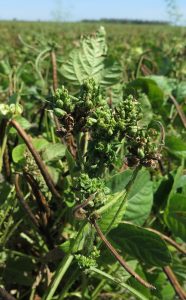
Mungbean with phyllody (greening of flower structures) and little leaf symptoms on upper growth.
Transmitted by leaf hoppers, the specialised bacteria of phytoplasma can cause severe disease and reduce yield and/ or affected pods in mungbean and other grain legumes like soybean, peanuts, pigeon pea and chickpea. Phytoplasma infection in mungbean and other grain legumes has been observed in all production regions in the last several years at varying levels from season to season. Disease surveys in 2022 as part of DAFQ / GRDC project DAQ2106-007RTX identified several blocks of mungbean in CQ with 5-10% incidence of phytoplasma and associated puffy pod symptoms. Very high incidence of phytoplasma was also reported from far northern production areas. While some plants had obvious little leaf and phyllody (greening of flower structures), many had few foliar symptoms but many puffy pods and only some terminal growth with phytoplasma little leaf.
Puffy pod affected plants typically remain green for longer than healthy mature plants, with small upturned sickle-shaped pods.
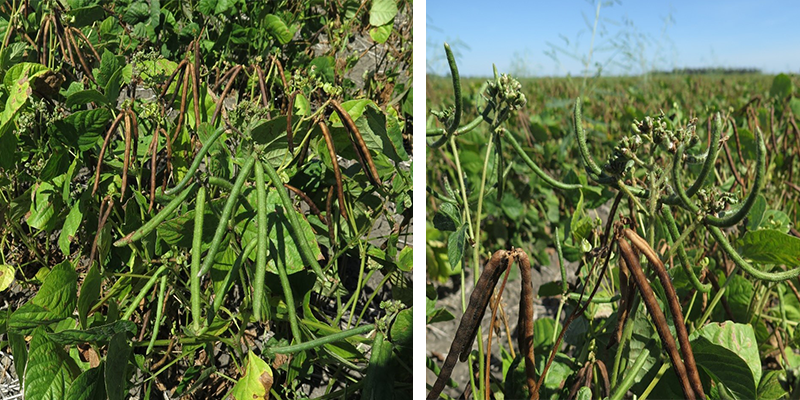
Plants with pods that remain green for much longer than surrounding plants may have phytoplasma infection (left), and phytoplasma-infected mungbeans often have upturned, sickle-shaped pods with some little leaf symptoms only seen on the upper most terminal growth (right).
Expanded pods with green net-like patterns have smaller seeds and more white pith around seeds, resulting in soft, puffy pods when squeezed.
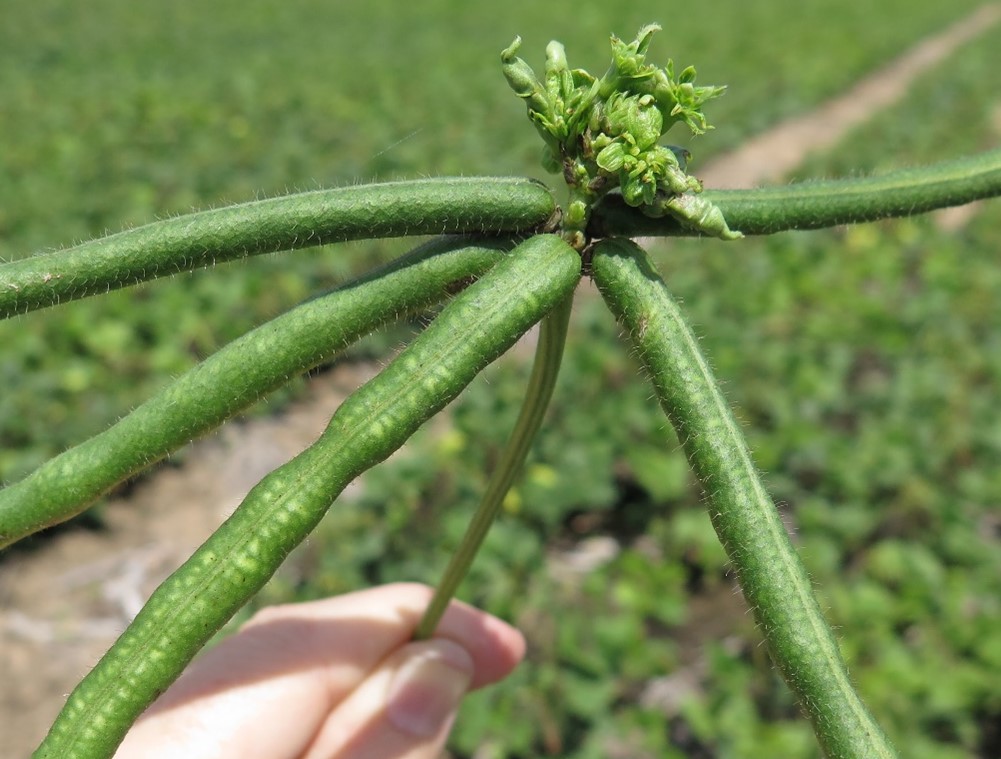
Puffy pod affected mungbeans often have a dark green net-like pattern on the pods and some little leaf symptoms only seen on the upper most terminal growth.
When puffy pods mature, they remain more tan brown in colour with wrinkled pod skins and discoloured, small seeds.
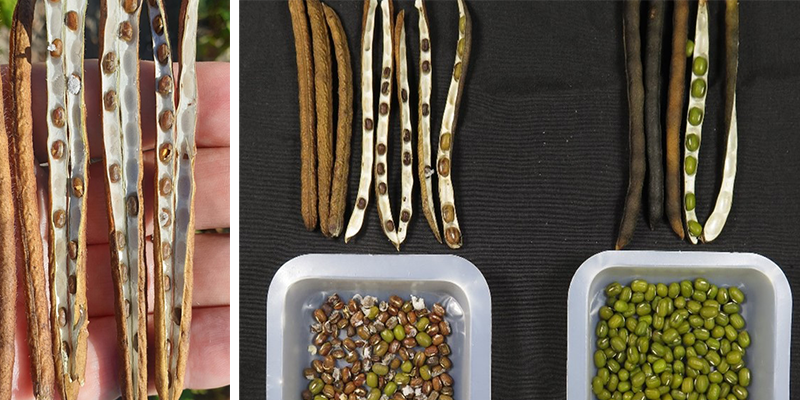
Mature phytoplasma-affected puffy pods remain tan coloured rather than dark, with wrinkled skins on pods and shrivelled, discoloured seeds. Also pictured is a comparison of phytoplasma puffy pods and affected seeds (left) versus healthy (right).
The disease cycle of phytoplasma in mungbeans remains poorly understood but we now know that the brown leaf hopper (Orosius orientalis) is able to transmit the disease and could be important in affected mungbean crops, bringing infection into crops from nearby weed hosts.
Growers and agronomists are encouraged to keep an eye out for puffy pod and phytoplasma symptoms and report to DAF plant pathologists (Murray Sharman or Lisa Kelly – see contacts page) to more accurately determine the effect on mungbean crops.
While severe phytoplasma infection is obvious (particularly in crops that have been infected early in the season), the subtle foliar symptoms on many plants means it is possible that the levels of puffy pod affected plants are under-recognised and affected seed may lead to downgrading of harvest quality. There is currently no effective recommendation for control of phytoplasma in mungbean and no known tolerance in germplasm. Limited observations indicate timing of planting can greatly affect disease incidence but this appears to be related to influx of infectious hoppers and we are not yet able to predict the time of highest risk.
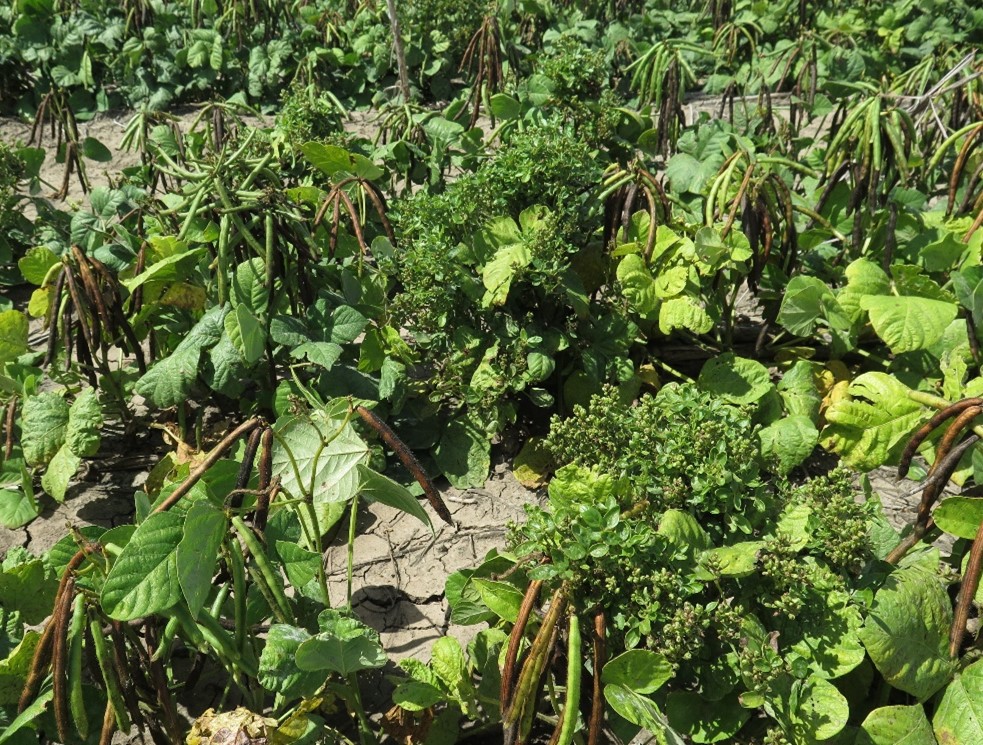
Early infections of mungbeans with phytoplasma can result in severely affected plants with few normal leaves and little or no pods.
Tobacco streak virus
Tobacco streak virus (TSV) was also found at up to 30% incidence in several crops in Central Queensland in March 2022. Symptoms include severe necrosis and death of younger plants and sometimes pod necrosis with later infections. TSV remains a significant threat to mungbean crops in CQ due to the virus being commonly found in the major weed hosts, Parthenium and crownbeard. Currently, no effective tolerance to TSV has been found in current mungbean varieties and further research is needed to determine if tolerance can be identified in breeding germplasm. The only effective strategies available to growers to reduce risk is selecting paddocks to avoid planting mungbean crops downwind of known areas of high parthenium density. Some paddocks were seen with both phytoplasma and TSV which can severely affect plant populations and quality of seed.
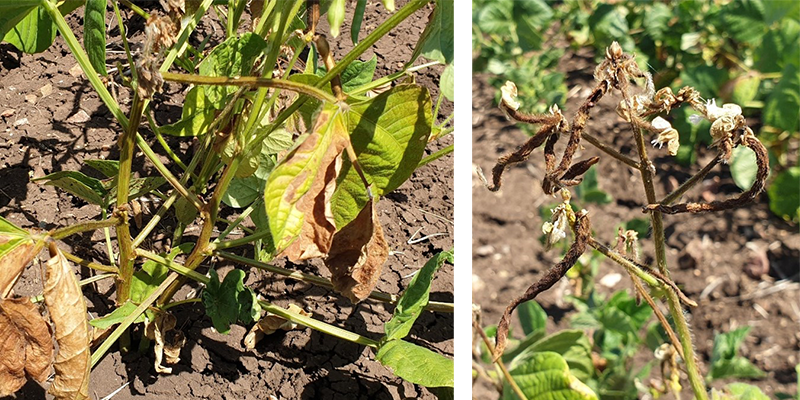
Terminal necrosis and death of young mungbeans is commonly seen with early infections of TSV (left). Necrosis is seen spreading along petioles and stem. Later infections of mungbeans sometimes results in severe necrosis and distortion of pods (right). It is thought that TSV-carrying thrips feed in the flowers and on expanding pods.
A range of disease images (including phytoplasma and TSV in mungbeans) and publications can be viewed in the Diseases section of The Beatsheet.
